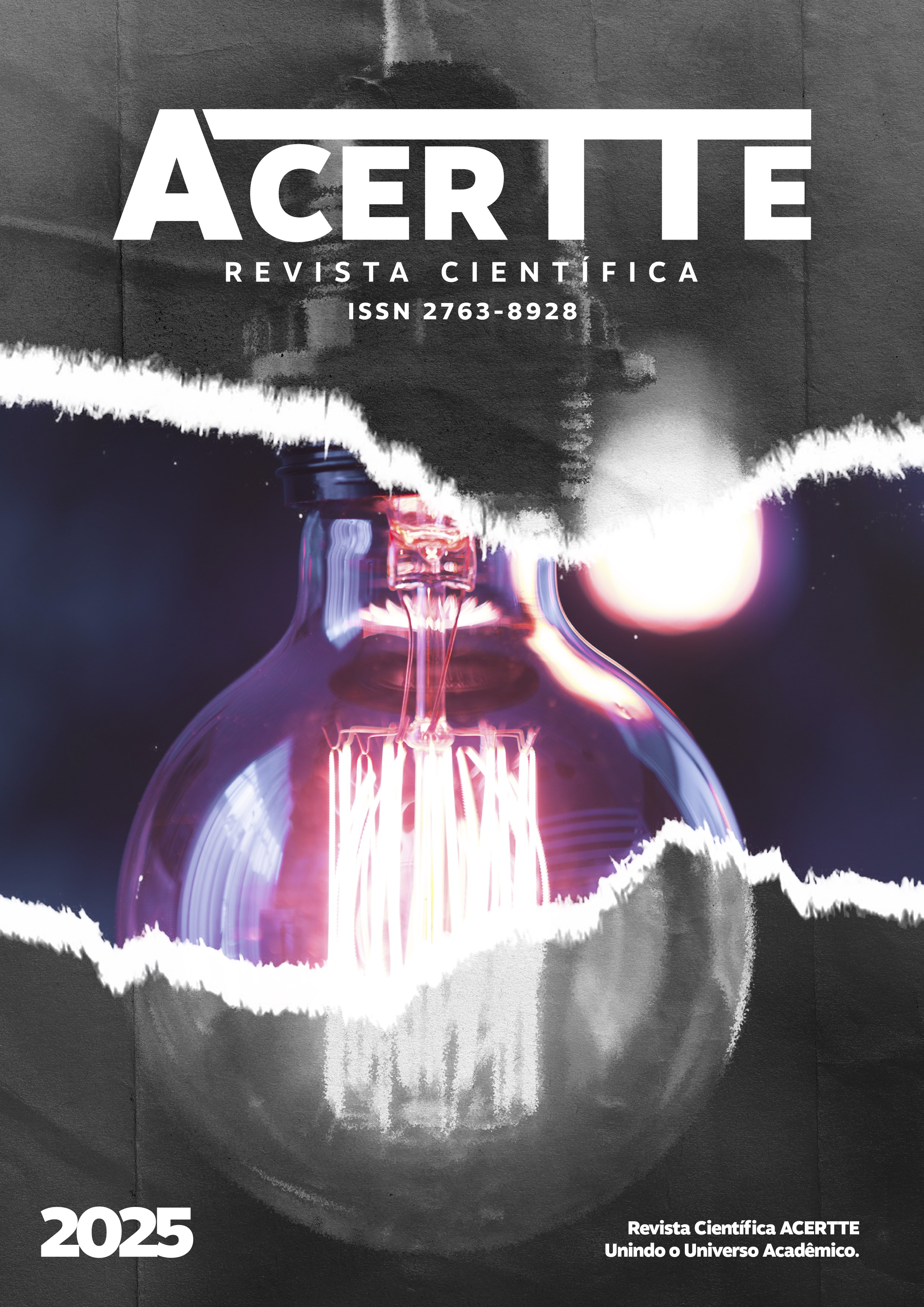RELATIONSHIP BETWEEN OVERWEIGHT AND TYPE 2 DIABETES MELLITUS IN ADULTS FROM THE FEDERAL DISTRICT: AN EPIDEMIOLOGICAL ANALYSIS USING DATASUS DATA
DOI:
https://doi.org/10.63026/acertte.v5i10.267Keywords:
Type 2 diabetes mellitus. Overweight. Epidemiology.Abstract
Type 2 diabetes mellitus (T2DM) is one of the major challenges in contemporary public health, with increasing incidence and a strong association with overweight and lifestyle factors. Understanding the epidemiological patterns of the disease is essential for planning preventive and intervention strategies. Objective: To analyze the relationship between overweight and the diagnosis of T2DM in adults living in the Federal District, based on secondary data extracted from DATASUS between 2002 and 2011. Methods: Observational, quantitative, and descriptive-analytical study using data from the Brazilian Health Information System (TABNET/DATASUS). Cases of type 1 and type 2 diabetes were analyzed by sex, age group, and presence of overweight, using descriptive statistics, chi-square tests, Student’s t-test, and Pearson correlation. Results: A significant association between overweight and T2DM (p < 0.001) was observed, particularly among older women. In men, age showed a stronger correlation with T2DM than BMI, while type 1 diabetes displayed distinct patterns between individuals with and without overweight. Conclusion: Overweight was strongly associated with T2DM among women and older adults. The findings highlight the importance of gender- and age-specific preventive strategies, including complementary indicators to BMI for better identification of risk groups.
Downloads
References
AMERICAN DIABETES ASSOCIATION. Diagnosis and classification of diabetes mellitus. Diabetes Care, v. 34, suppl. 1, p. S62–S69, 2011. DOI: https://doi.org/10.2337/dc11-S062
BRASIL. Ministério da Saúde. DATASUS – Departamento de Informática do SUS. Brasília: Ministério da Saúde, 2024. Disponível em: https://datasus.saude.gov.br. Acesso em: 28 set. 2025.
BRASIL. Ministério da Saúde. VIGITEL Brasil 2022: Vigilância de Fatores de Risco e Proteção para Doenças Crônicas por Inquérito Telefônico. Brasília: Ministério da Saúde, 2022. Disponível em: https://www.gov.br/saude. Acesso em: 28 set. 2025.
DISTRITO FEDERAL. Secretaria de Estado de Saúde. Boletim Epidemiológico de Obesidade e Diabetes 2022. Brasília: SES-DF, 2022.
HOTAMISLIGIL, G. S. Inflammation and metabolic disorders. Nature, v. 444, p. 860–867, 2006. DOI: https://doi.org/10.1038/nature05485
HU, F. B. Globalization of diabetes: the role of diet, lifestyle, and genes. Diabetes Care, v. 34, p. 1249–1257, 2011. DOI: https://doi.org/10.2337/dc11-0442
INTERNATIONAL DIABETES FEDERATION. IDF Diabetes Atlas. 10. ed. Brussels: IDF, 2021. Disponível em: https://www.diabetesatlas.org. Acesso em: 28 set. 2025.
KAHN, S. E.; HULL, R. L.; UTZSCHNEIDER, K. M. Mechanisms linking obesity to insulin resistance and type 2 diabetes. Nature, v. 444, p. 840–846, 2006. DOI: https://doi.org/10.1038/nature05482
MALTA, D. C. et al. Doenças crônicas não transmissíveis e a utilização de serviços de saúde: análise da Pesquisa Nacional de Saúde no Brasil. Revista de Saúde Pública, v. 53, supl. 2, p. 1–13, 2019.
SCHMIDT, M. I. et al. Chronic non-communicable diseases in Brazil: burden and current challenges. The Lancet, v. 377, n. 9781, p. 1949–1961, 2011. DOI: https://doi.org/10.1016/S0140-6736(11)60135-9
SZENDROEDI, J.; PHIELIX, E.; RODEN, M. The role of mitochondria in insulin resistance and type 2 diabetes mellitus. Nature Reviews Endocrinology, v. 8, n. 2, p. 92–103, 2012. DOI: https://doi.org/10.1038/nrendo.2011.138
TUOMILEHTO, J. et al. Prevention of type 2 diabetes mellitus by changes in lifestyle among subjects with impaired glucose tolerance. New England Journal of Medicine, v. 344, p. 1343–1350, 2001. DOI: https://doi.org/10.1056/NEJM200105033441801
WORLD HEALTH ORGANIZATION (WHO). Obesity and overweight – Key facts. Geneva: WHO, 2021. Disponível em: https://www.who.int/news-room/fact-sheets/detail/obesity-and-overweight. Acesso em: 28 set. 2025.
ZAMBONI, M. et al. Sarcopenic obesity: A new category of obesity in the elderly. Nutrition, Metabolism & Cardiovascular Diseases, v. 29, n. 1, p. 5–10, 2019.
ZIMMET, P. Z.; MAGLIANO, D. J.; HERMAN, W. H.; SHAW, J. E. Diabetes: a 21st century challenge. The Lancet Diabetes & Endocrinology, v. 2, p. 56–64, 2014. DOI: https://doi.org/10.1016/S2213-8587(13)70112-8
Downloads
Published
How to Cite
License
Copyright (c) 2025 ACERTTE SCIENTIFIC JOURNAL

This work is licensed under a Creative Commons Attribution 4.0 International License.
Os direitos autorais dos artigos/resenhas/TCCs publicados pertecem à revista ACERTTE, e seguem o padrão Creative Commons (CC BY 4.0), permitindo a cópia ou reprodução, desde que cite a fonte e respeite os direitos dos autores e contenham menção aos mesmos nos créditos. Toda e qualquer obra publicada na revista, seu conteúdo é de responsabilidade dos autores, cabendo a ACERTTE apenas ser o veículo de divulgação, seguindo os padrões nacionais e internacionais de publicação.










